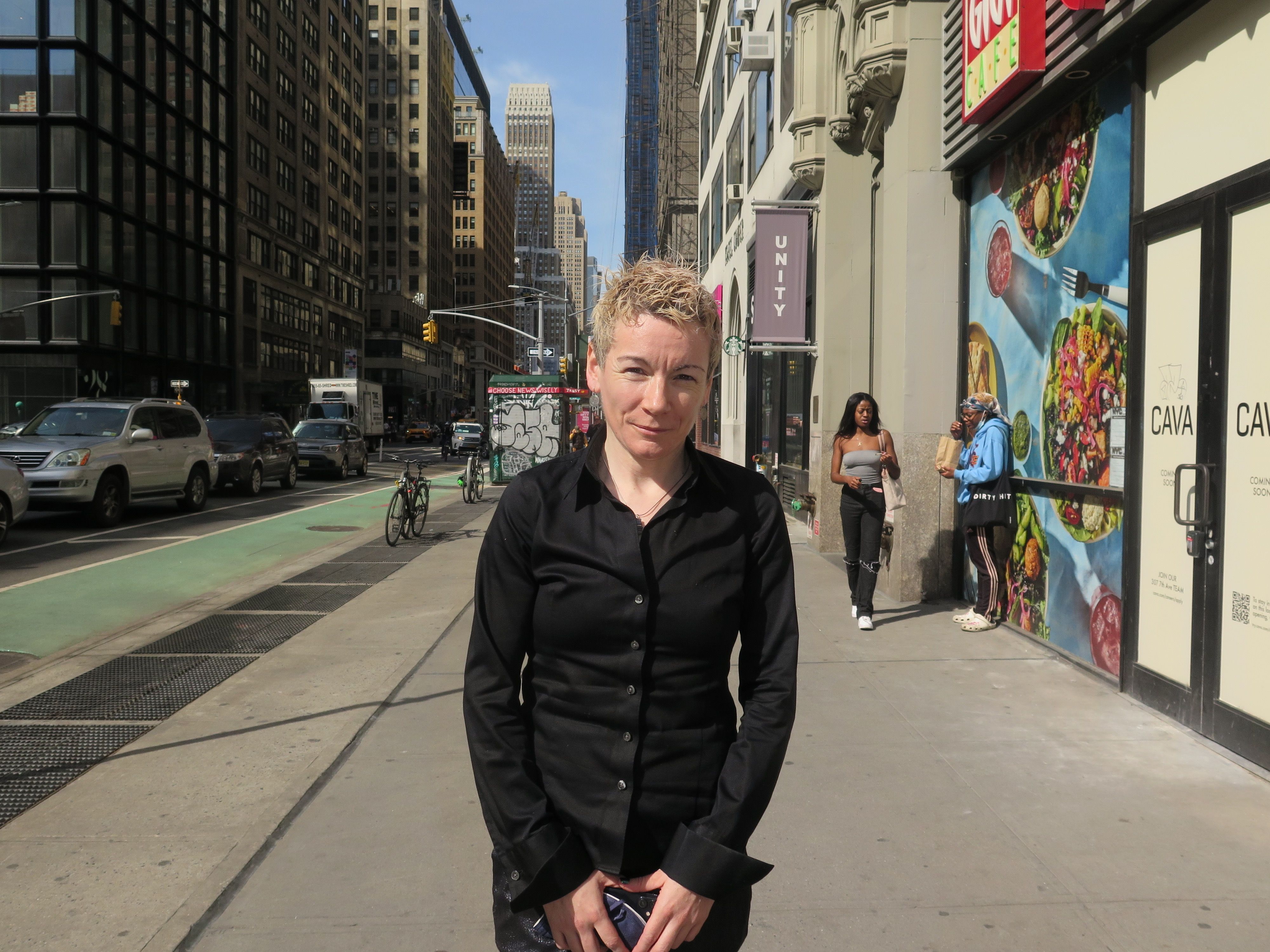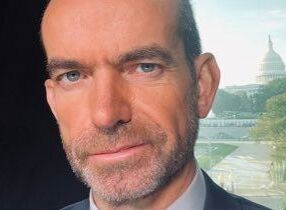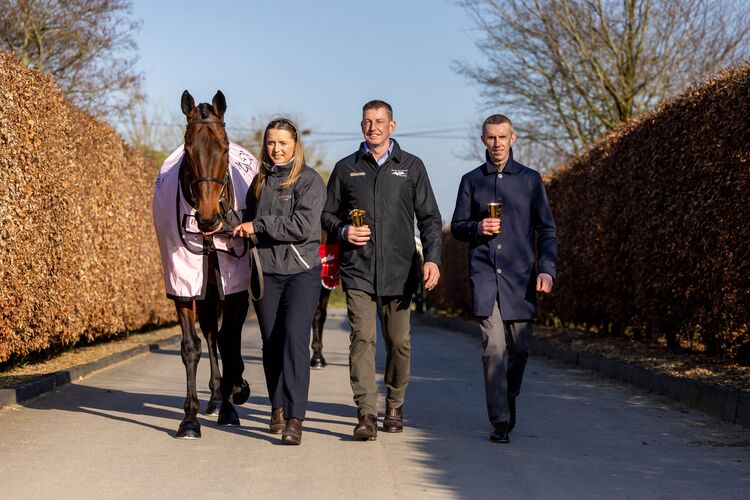“It’s like bailing out the flood without turning off the faucet.”
That’s how Áine Duggan describes New York City’s approach to the problem of homelessness.
It could be and should be different, said the president and CEO of the Partnership to End Homelessness, who will be honored as a Community Champion on Friday.
There are solutions and they have been tested and have worked elsewhere.
“The most humanitarian approach is the most cost-effective,” she said. “We’ve done the math on it.
“It is seen as intractable,” Duggan said, which might suggest that it’s been static over time, but, she added, “the fact is we have much greater levels of homelessness than decades ago.”
The Partnership for the Homeless worked on the problem for nearly 40 years and came to the view that the trend could be radically reversed; recently, its new president and CEO oversaw the change of name to reflect that philosophy.
Duggan, who grew up in rural West Cork, has spent most of her adult life working on and thinking about social issues in America’s biggest city. (For the personal histories of the 25 Community Champions who are being honored by the Irish Echo on Friday evening, consult the special supplement in the digital/print edition published today.)
She said the most difficult part of the homeless problem, street homelessness, demands the greatest patience and sustained engagement to tackle it, and it “gets almost of all of the media attention.”
But the street homeless are a little under 10 percent of the numbers involved – 4,000 to 5,000 people – compared to the 50,000 women and children that bed down in sheltered accommodation each night in New York City. Or, one could say it’s 1 percent of the problem in that up to half a million people are in rental arrears.
Duggan said the typical adult that her organization steps in to assist is a woman of color, a young working mom, perhaps with a frontline job.
“She’s earning. She might have one or two kids. She can cover the rent and the food bills in a good month,” the president and CEO said. “Something happens – there’s an extra medical bill or there’s a death in the family. Some extraordinary expense and it puts her behind. She can’t pay rent for a month.”
There’s more money owed in arrears than the non-profits can pay off. Covid has exacerbated things greatly, of course, because so many people were made part-time at work in 2020. Most are back with their full-time jobs, but some can’t cover the rental arrears incurred. There are now hundreds of cases winding their way through the court system, Duggan reported, because the eviction moratorium has ended and the federal money for rental assistance has dried up.
Her organization’s efforts are first of all focused upon helping families financially so they don’t go to eviction proceedings.
The street homeless are a particularly vulnerable and marginal population, but it is the working poor who are bearing the brunt of overcrowding and evictions in a city that doesn’t have enough affordable housing.
“Very often they’re families who’ve suffered through domestic violence,” Duggan said of those in sheltered accommodation. Upwards of 80 percent will have a domestic violence history or of childhood sexual abuse, or current situation going on, and the Partnership to End Homelessness provides some counselling in the short term as well as referrals for therapy in the longer term.
New York has at least in its favor a legal right to shelter, in contrast to certain other wealthy cities where homelessness is rather more visible and ultimately more costly in terms of health and social services, not to mention the damage done to the social fabric.
It costs New York $70,000 per annum for a family to reside in shelter, while the average stay in the system is a year and a half. As the arrears the Partnership to End Homelessness typically pays or helps pay are $4,000 or $5,000, it argues that policy solutions that involve a bigger and earlier intervention ultimately make the most sense.
System simplified
At the micro level, the Partnership to End Homelessness changed its way of doing things in 2020. Let’s say a family owes $5,000. It might be eligible for a “one-shot deal” from the city, which might pay $3,500 or $3,800 out of the $5,000.
“The family is left with this balance,” Duggan said. The family then usually makes it up by going to a series of non-profits, which might give $300 here and $400 there until the target is reached.
In each place, it has to do an “intake,” answering the same questions that the city had asked, meeting with officials and counselors, and letters from each of the other organizations, and so on.
“It’s a fulltime job navigating that system,” Duggan said. “We don’t do that. If they’re eligible for government funding we help them get government funding, but we cover the rest of the balance. We do what we call a ‘full-payment model.’
“The landlord is more likely to engage with us, because they are not waiting for multiple checks. They are dealing with the one entity, and they learn to trust that entity.
“It’s better for our donors because we’re able to negotiate with the landlord and make the dollars go further.”
For Duggan, there are no heroes or villains in this problem, for the most part, just things that work, or would work if tried properly, and those that don’t so much.
“In some ways it’s a very simple prescription, but because of the bureaucratic nature of our systems it’s a real uphill battle to get it done.
“We are expending most of the effort and most of the money after the fact. We should be investing in prevention," she said. “It’s not about any one entity – it’s not about any one mayor, or pointing the finger and saying that this person is doing x, y and z wrong. It’s an entire system – it’s multiple systems all working together in this way that’s feeding the problem.”
Referring to the engagement with street homelessness, where multiple problems intersect, but most of all chronic mental health issues and poverty, she said “there are so many obstacles in the way.”
Duggan added, “The primary way we should be engaging is with mental health services. A lot of it is making sure you have the right mental health workers, that they are properly trained, they’re properly resourced. And now you have a combination of the NYPD and mental health workers doing outreach, approaching people on the streets. But that’s difficult work. Does it belong with the NYPD? Are they being trained separately or are they being trained together?
“Are they going out every night in teams with the same people?
“You’re not getting them off the street by engaging with them once,” she said of a homeless person in the subway or the street. “You’re going to have to engage with them nine times, 10 times, before they build the trust with you. In order to be able to receive the assistance you are trying to provide. And that means you have to have a very low case count in order for you to be effective at that job.”
‘Helsinki model’
As for the more manageable crisis – albeit much bigger in terms of numbers – of families in sheltered accommodation, Duggan believes the priority must be to get stable housing.
There’s a lot of interest in the U.S. in the “Scottish model,” so-called because the onus is on the Scottish government to house a family within 90 days of their entry into the sheltered accommodation system. It’s clearly better than anything here, but for Duggan that’s too “downstream” a solution, because it suggests a family must fall into homelessness before its problems can be addressed.
The “Helsinki model” is a more “upstream” intervention and it makes more sense to the Partnership to End Homelessness.
Finland, indeed, is the only European Union country where homelessness has been on the decrease.
A 2019 Guardian piece on its Housing First policy reported, “As in many countries, homelessness in Finland had long been tackled using a staircase model: you were supposed to move through different stages of temporary accommodation as you got your life back on track, with an apartment as the ultimate reward.”
It quoted Juha Kaakinen, one of the new program’s founders, saying, “We had to get rid of the night shelters and short-term hostels we still had back then. They had a very long history in Finland, and everyone could see they were not getting people out of homelessness. We decided to reverse the assumptions.
“We decided to make the housing unconditional. To say, look, you don’t need to solve your problems before you get a home. Instead, a home should be the secure foundation that makes it easier to solve your problems.”
That’s the foundation stone, according to Duggan.
“The best way for anyone to think about that is our own lives,” the president and CEO said. “If we didn’t have our apartments to go to tonight, if we weren’t able to close the door behind us, to settle in, make dinner, unwind from the day, and then get up and do it all again tomorrow, we wouldn’t be able to function.
“That’s the experience we have with a lot of the families we have – once they’re stably housed, you pay off rent arrears, you can engage them in all sorts of other services and they’re able to start, they’re able to grow their own stability. It’s remarkable what families are able to achieve. It does work.”
Duggan then raised again and broadened her central point, “When the most humanitarian approach is the most cost-effective, then there’s a big question as to why we’re not investing in it.”








